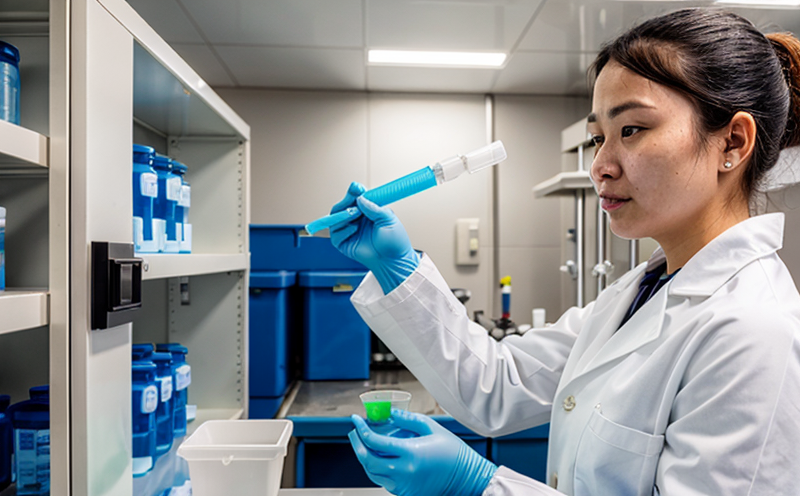USP Mold Contamination Testing
The USP Mold Contamination Testing is a critical component of ensuring drug product quality and safety. This service focuses on identifying mold contamination in pharmaceutical products, which can significantly impact the effectiveness and stability of medicinal drugs. Mold contamination not only affects the shelf life but also poses health risks to consumers by introducing potential allergens or toxins.
Pharmaceutical companies must adhere strictly to the United States Pharmacopeia (USP) standards, which provide detailed guidance for testing mold contamination in drug products. The USP standards are recognized globally and ensure that pharmaceutical products meet stringent quality criteria. This service ensures compliance with these standards by conducting thorough microbiological analyses.
The process of USP Mold Contamination Testing involves several key steps to ensure accuracy and reliability. Initially, the sample is prepared according to the specified procedures outlined in the USP guidelines. The specimen preparation includes aseptic sampling techniques to prevent contamination during the testing process. Once prepared, the samples are inoculated into appropriate media suitable for mold growth.
The next step involves incubation and observation of mold colonies. This phase is crucial as it allows the molds to grow under controlled conditions that mimic real-world environments. After a specified incubation period, the colonies are counted and identified using microscopic examination and standard reference materials. The identification process ensures accurate categorization of different mold species.
The test results are then analyzed against USP standards to determine compliance levels. Compliance with these standards is essential for ensuring that drug products do not contain harmful amounts of molds, which could compromise their safety and efficacy. Non-compliance can lead to product recalls, regulatory actions, and reputational damage.
Given the critical nature of this testing, it is vital to have a laboratory that employs experienced microbiologists and uses advanced instrumentation such as scanning electron microscopy (SEM) for detailed analysis. The use of high-quality media and controlled environmental conditions also plays a significant role in obtaining accurate results.
To enhance reliability, laboratories often implement quality control measures like routine calibration checks and proficiency testing against recognized standards. This ensures that the laboratory maintains consistent and reliable performance across all tests conducted.
Applied Standards
The USP Mold Contamination Testing service strictly adheres to the guidelines provided by the United States Pharmacopeia (USP). These standards are widely recognized for their rigorous approach to ensuring pharmaceutical quality. The specific sections of the USP that pertain to mold contamination testing include:
- USP 71: General Chapter on Microbiological Examination of Non-Sterile Products
- USP 72: Sterility Testing
- USP 73: Bacterial Endotoxins Test
The application of these standards ensures that the testing process is standardized and replicable, leading to consistent results. Laboratories conducting USP Mold Contamination Testing must be accredited by agencies such as the American Society for Testing and Materials (ASTM) or the European Pharmacopoeia (Ph. Eur.) to ensure compliance with international quality control requirements.
Benefits
The USP Mold Contamination Testing service offers numerous benefits that are crucial for maintaining high-quality standards in pharmaceutical manufacturing:
- Compliance with Regulatory Requirements: Ensures adherence to stringent USP guidelines, thereby avoiding potential legal issues and regulatory actions.
- Enhanced Product Quality: Identifies mold contamination early in the production process, allowing for corrective measures before product release.
- Patient Safety: Prevents the distribution of potentially harmful products that could cause allergic reactions or other health issues.
- Reputation Management: Maintains a positive brand image by ensuring consistent quality and safety standards.
Competitive Advantage and Market Impact
The USP Mold Contamination Testing service offers significant competitive advantages in the pharmaceutical industry. By providing accurate, reliable, and compliant testing services, laboratories can:
- Gain a reputation for excellence in quality control.
- Increase customer confidence through consistent results that meet international standards.
- Differentiate themselves from competitors by offering state-of-the-art laboratory facilities and experienced microbiologists.
- Stay ahead of regulatory changes and trends in the pharmaceutical sector.
This service also impacts the market positively by ensuring that only high-quality, safe products reach consumers. It supports the overall industry goal of maintaining public health standards while fostering innovation within drug development processes.





